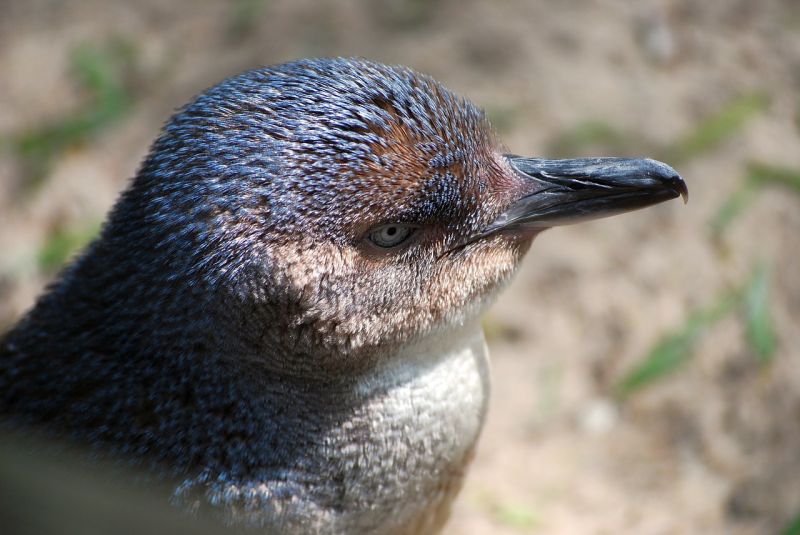The Little Penguin (Eudyptula minor) is perhaps the most adored seabird in Australia. Standing at a height of approximately 33cm (13 inches) and weighing around one kilogram (2.2 pounds), they hold the title of the world’s smallest penguin.
Although the males are slightly larger, both males and females appear similar in colouring. They are predominately covered in navy blue feathers, however, have a white underbelly. Interestingly, there is a very good reason for these colourings. From above, the navy blue feathers blend in with the ocean, helping them camouflage from predators above. Their white underbelly does the same, but blends in with the sky, protecting them from predators below them.
Little Penguins are found across the southern coastline of Australia, most commonly found around Phillip Island and Tasmania (including Maria Island), but can be occasionally seen around Sydney Harbour, Kangaroo Island and the Great Ocean Road. They spend up to 80% of their lives out at sea, diving to depths of 70m (230ft) to hunt for small fish, cephalopods and occasionally crustaceans. Adults may travel up to 20km in a single day but tend to cover shorter distances during breeding.
Where can I see the Little Penguin with an expert guide?
There are stable populations in a number of areas around Australia, however, the best viewing opportunities are around Phillip Island and Tasmania:
Seal Watching Cruise (2 Hours) - Wildlife Coast Cruises (Phillip Island)
Tasmania's Wildlife & Wilderness (6-8 Days) - Premier Travel Tasmania

Between June and August, male Little Penguins return to either renovate old burrows or dig new ones, with noisy male courting displays greeting females on arrival. These nests are built in crevices between rocks or burrows. Once paired and mated, the females will lay two eggs and then the pair take turns sitting on the nest, incubating the eggs. Although both eggs may hatch, usually only one chick survives.
FAQs
Q: Why do they waddle?
A: They have such short legs and big feet, which makes waddling the most efficient method of movement for them.
Q: Can you tell the difference between a male and a female?
A: Yes - not only do males have a thicker beak, but they also have a little hook in the end.
Q: How fast can they swim?
A: They have been known to swim at speeds of up to 7kph (4.3mph) over short distances but they average about half of that.

